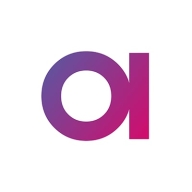

SAP Data Hub and Ataccama ONE Platform compete in data management and governance. SAP Data Hub has the edge in integration capabilities, but Ataccama ONE Platform offers a more comprehensive solution with advanced data governance features, offering value despite similar costs.
Features: SAP Data Hub emphasizes robust data integration, streamlined connectivity, and the ability to manage complex operations. Ataccama ONE Platform centers on data quality and governance, delivering profiling, cataloging, and cleansing tools. While SAP focuses on integration, Ataccama provides extensive governance functions.
Ease of Deployment and Customer Service: SAP Data Hub supports flexible deployment with strong customer support, aiding complex implementations. Ataccama ONE Platform ensures efficient deployment and exceptional service, offering a user-friendly model for quicker integration.
Pricing and ROI: SAP Data Hub, with sophisticated integration capabilities, has potentially higher setup costs but promises strong ROI through efficient processing. Ataccama ONE Platform, competitively priced, ensures good ROI with a focus on data quality, providing great value in governance features.

Ataccama ONE Platform is a comprehensive data management and governance solution designed to address the challenges faced by organizations in managing and leveraging their data assets. Its primary use case is to enable organizations to gain control over their data, improve data quality, and ensure compliance with data regulations.
The most valuable functionality of Ataccama ONE includes data profiling, data quality management, data integration, master data management, and metadata management. These features allow organizations to understand the quality and structure of their data, integrate data from various sources, create a single view of their master data, and manage metadata to ensure data lineage and governance.
By leveraging Ataccama ONE, organizations can achieve several benefits. Firstly, it helps in improving data quality by identifying and resolving data issues, ensuring accurate and reliable data for decision-making. Secondly, it enables organizations to streamline data integration processes, reducing the time and effort required for data integration projects. Thirdly, it facilitates effective master data management, enabling organizations to have a consistent and accurate view of their critical data entities. Lastly, it helps organizations in complying with data regulations by providing data lineage, data privacy, and data governance capabilities.
The SAP® Data Hub solution enables sophisticated data operations management. It gives you the capability and flexibility to connect enterprise data and Big Data and gain a deep understanding of data and information processes across sources and systems throughout the distributed landscape. The unified solution provides visibility and control into data opportunities, integrating cloud and on-premise information and driving data agility and business value. Distributed processing power enables greater speed and efficiency.
We monitor all Data Governance reviews to prevent fraudulent reviews and keep review quality high. We do not post reviews by company employees or direct competitors. We validate each review for authenticity via cross-reference with LinkedIn, and personal follow-up with the reviewer when necessary.